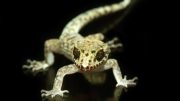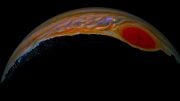
Research from the University of Michigan has uncovered changes in the genomes of early bird ancestors following the mass extinction caused by an asteroid 66 million years ago, identifying “genomic fossils” that illustrate significant DNA shifts. These changes, crucial for bird evolution, reveal how such catastrophic events have deep and lasting impacts on biodiversity and organismal biology.
Research reveals that the end-Cretaceous mass extinction significantly altered bird genomes, contributing to the evolution and diversity of today’s birds. By analyzing genomic fossils and evolutionary shifts, the study provides deeper understanding of how mass extinctions shape life on Earth.
Shortly after an asteroid struck Earth 66 million years ago, life for non-avian dinosaurs came to an end, but the evolutionary story for the early ancestors of birds began.
The fossil record tells us that the early ancestors of living birds began their evolutionary journey just after the mass extinction event caused by the asteroid, but researchers weren’t sure how they would see that story reflected in bird genomes. Now, a University of Michigan study has identified important changes in birds’ genomes sparked by the mass extinction, called the end-Cretaceous mass extinction event, ultimately contributing to the incredible diversity of living birds.
The study examined the evolutionary trajectory of all major bird groups and found evidence of “genomic fossils” in birds’ DNA that mark critical evolutionary steps as birds evolved into more than 10,000 living species. The research is published as an open-access article in the journal Science Advances.
“By studying the DNA of living birds, we can try to detect patterns of genetic sequences that changed just after one of the most important events in Earth’s history,” said lead author Jake Berv, who completed the study as a Michigan Life Sciences Fellow in the U-M Department of Ecology and Evolutionary Biology. “The signature of those events seems to have imprinted into the genomes of the survivors in a way that we can detect tens of millions of years later.”
Genome Composition and Evolutionary Potential
A living organism’s genome comprises four nucleotide molecules, referred to by the letters A, T, G, and C. The order of these nucleotides in a genome defines the “blueprint” of life. The DNA code can sometimes evolve in a way that shifts the overall composition of DNA nucleotides across the whole genome. These compositional changes are crucial in determining what kind of genetic variation is possible, contributing to an organism’s evolutionary potential, or its ability to evolve.
The researchers found that the mass extinction event sparked shifts in nucleotide composition. They also found that these shifts seem to be connected to the way birds develop as babies, their adult size, and their metabolism.
For example, within approximately 3 million to 5 million years of the mass extinction, surviving bird lineages tended to develop smaller body sizes. They also changed how they developed as hatchlings, with more species becoming “altricial.” This means they are still very embryonic when they hatch, need their parents to feed them, and can take weeks to fledge, Berv says. Birds that hatch ready to fend for themselves, like chickens and turkeys, are called “precocial.”
“We found that adult body size and patterns of pre-hatching development are two important features of bird biology we can link to the genetic changes we’re detecting,” said Berv, now a Schmidt AI in Science postdoctoral fellow with U-M’s Michigan Institute for Data & AI in Society.
Advanced Genomic Modeling
Berv says one of the most significant challenges in evolutionary biology and ornithology is teasing out the relationships between major bird groups—it’s difficult to determine the structure of the tree of life for living birds. Over the past 15 years, researchers have been applying increasingly large genomic data sets to try to solve the problem.
Previously, researchers used genomic data to study the evolution of birds’ genomes using statistical models that make strong assumptions. These “traditional” models allow researchers to reconstruct the history of genetic changes, but they typically assume that the composition of DNA, its proportion of A, T, G, and C nucleotides, does not change across evolutionary history.
In late 2019, Berv began working with Stephen Smith, U-M professor of ecology and evolutionary biology, who was developing a software tool to more closely track DNA composition over time and across different branches of the tree of life. With this tool, the researchers were able to relax the assumption that the composition of DNA remains constant. Smith said that this allowed the “model” of DNA evolution to vary across the evolutionary tree and identify places where there was likely a shift in DNA composition.
For this new research, these shifts were concentrated in time, within about 5 million years of the end-Cretaceous mass extinction, Berv says. Their approach also allowed them to estimate which bird traits were most closely associated with these shifts in DNA composition.
“This is an important type of genetic change that we think we can link to the mass extinction event,” he said. “As far as we know, changes in DNA composition have not been previously associated with the end-Cretaceous mass extinction in such a clear way.”
Daniel Field, professor of vertebrate paleontology at
the University of Cambridge and co-author of the study, has been interested in understanding how the end-Cretaceous mass extinction affected the evolution of birds. He provided guidance related to early bird evolution following the mass extinction.
“We know that mass extinction events can dramatically affect biodiversity, ecology, and organismal form. Our study emphasizes that these extinction events can actually influence organismal biology even more profoundly—by altering important aspects of how genomes evolve,” Field said. “This work furthers our understanding of the dramatic biological impacts of mass extinction events and highlights that the mass extinction that wiped out the giant dinosaurs was one of the most biologically impactful events in the entire history of our planet.”
The researchers say that by relaxing the typical assumptions used in evolutionary biology, they are building more nuanced insight into the sequence of events that occurred in the early history of birds.
“We have typically not looked at the change in DNA composition and model across the tree of life as a change that something interesting has happened at a particular point of time and place,” Smith said. “This study illustrates that we have probably been missing something.”
Reference: “Genome and life-history evolution link bird diversification to the end-Cretaceous mass extinction” by Jacob S. Berv, Sonal Singhal, Daniel J. Field, Nathanael Walker-Hale, Sean W. McHugh, J. Ryan Shipley, Eliot T. Miller, Rebecca T. Kimball, Edward L. Braun, Alex Dornburg, C. Tomomi Parins-Fukuchi, Richard O. Prum, Benjamin M. Winger, Matt Friedman and Stephen A. Smith, 31 July 2024, Science Advances.
DOI: 10.1126/sciadv.adp0114









Be the first to comment on "Biologists Uncover Hidden Genomic Legacy of the Dinosaur Extinction"